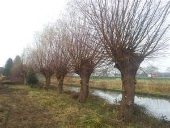




(Reminder to myself) God didn't say, "well said, well planned, and well thought out." He said, "well done."
Nikki's Wishlist
 1
1




 4
4




This is all just my opinion based on a flawed memory

 2
2








Ben Zumeta wrote: If one is worried about settling of the hugel exposing roots, just go look at wild trees that often start on nurselogs or stumps, and see the octopus like roots that form to stabilize the tree. Most trees actually benefit from some exposed roots for air access and rot prevention (Mike McGrath, YBYG podcast, Rosalie editor).
(Reminder to myself) God didn't say, "well said, well planned, and well thought out." He said, "well done."
Nikki's Wishlist
 3
3




![Filename: 4436B80B-D9DD-4192-8A5F-F240C5071760.jpeg
Description: [Thumbnail for 4436B80B-D9DD-4192-8A5F-F240C5071760.jpeg]](/t/170159/a/161631/4436B80B-D9DD-4192-8A5F-F240C5071760.jpeg)
![Filename: 1AEE7E98-08A2-4511-BD64-7C39A92137D3.jpeg
Description: [Thumbnail for 1AEE7E98-08A2-4511-BD64-7C39A92137D3.jpeg]](/t/170159/a/161632/1AEE7E98-08A2-4511-BD64-7C39A92137D3.jpeg)
This is all just my opinion based on a flawed memory

 2
2




Visit Redhawk's soil series: https://permies.com/wiki/redhawk-soil
How permies.com works: https://permies.com/wiki/34193/permies-works-links-threads
 2
2




This is all just my opinion based on a flawed memory

 1
1




(Reminder to myself) God didn't say, "well said, well planned, and well thought out." He said, "well done."
Nikki's Wishlist
 2
2





 3
3




How Permies works: https://permies.com/wiki/34193/permies-works-links-threads
My projects on Skye: The tree field, Growing and landracing, perennial polycultures, "Don't dream it - be it! "

|
Nothing? Or something? Like this tiny ad:
Learn Permaculture through a little hard work
https://wheaton-labs.com/bootcamp
|

